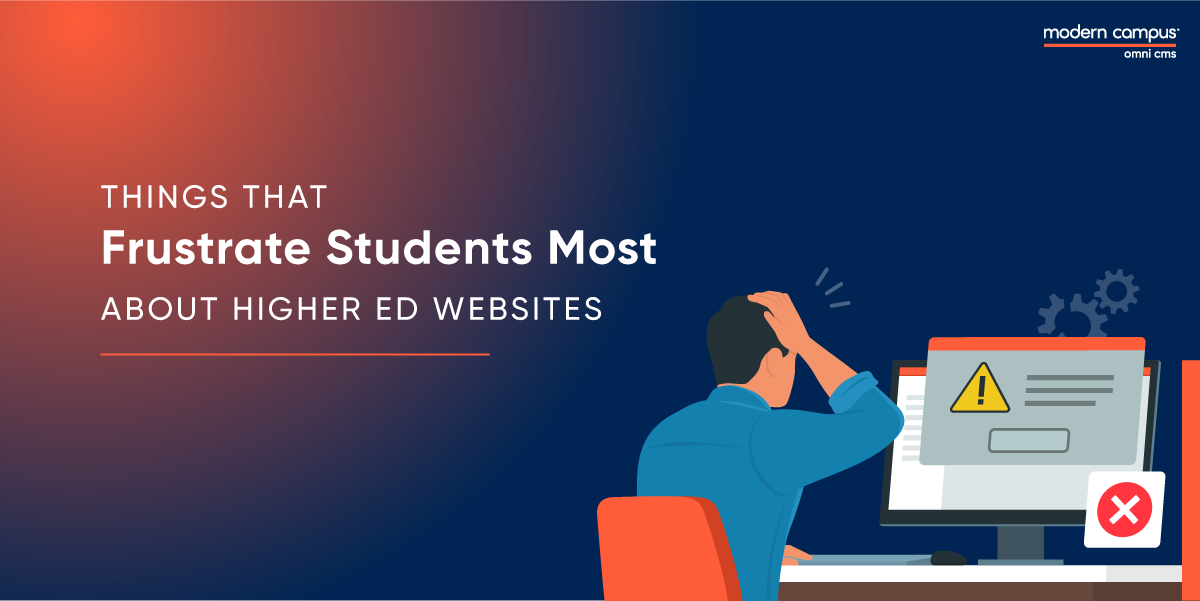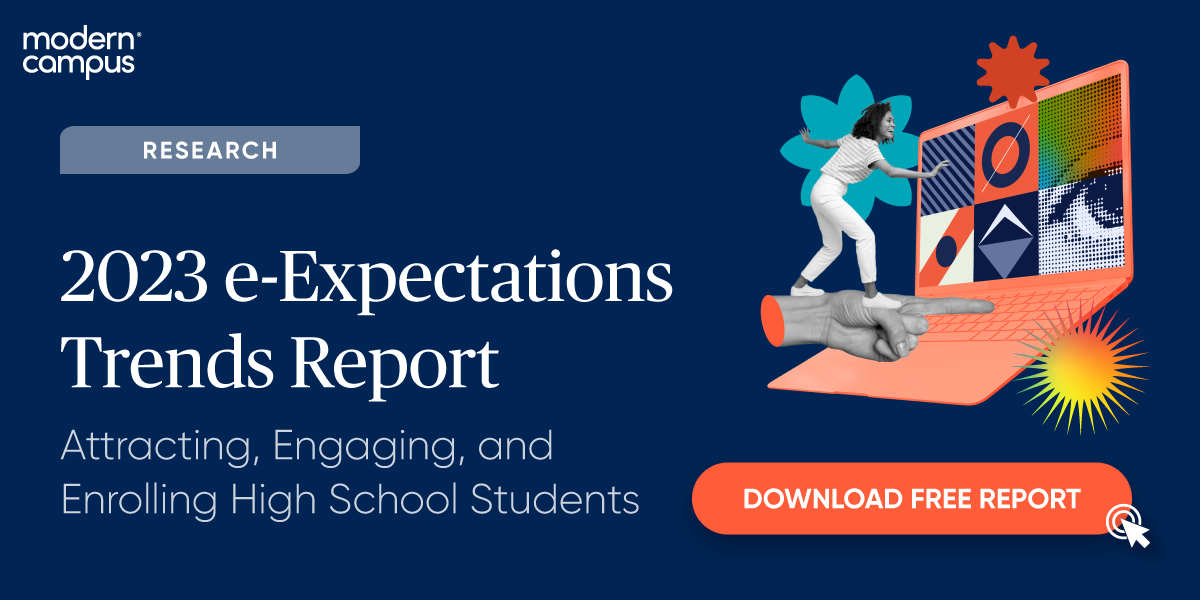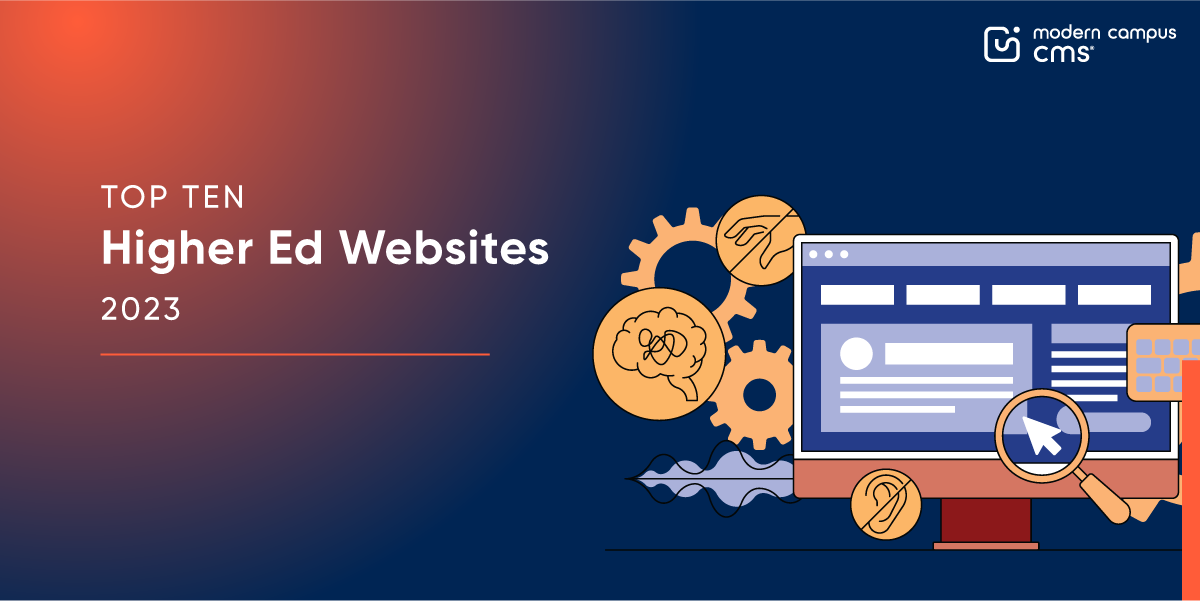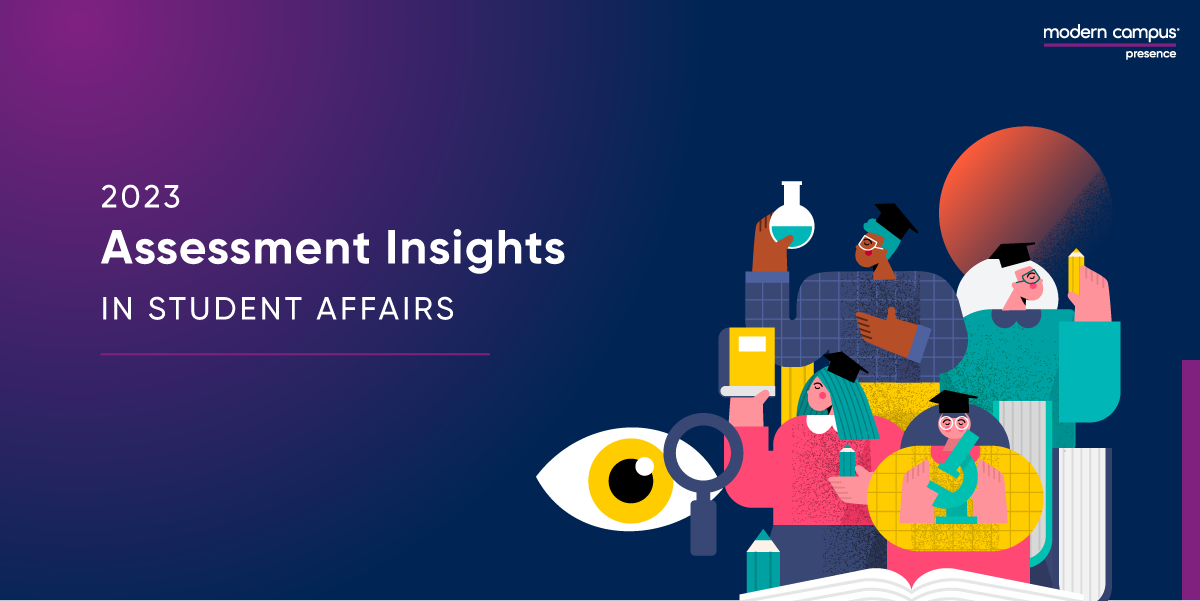What Frustrates Students Most About Higher Ed Websites
High school students have a love-hate relationship with college and university websites.
Although most high school students want to rely on websites as a go-to resource, higher ed websites rarely meet their expectations. This was found in a 2023 study developed by Modern Campus and based on research conducted in partnership with Ruffalo Noel Levitz (RNL).
The 2023 E-expectations Trends Report: Attracting, Engaging, and Enrolling High School Students explores how high school students plan and research for higher education, what tools they use to gather information and what influences their journey and decisions. Students report numerous challenges navigating higher ed websites and finding relevant information.
The following chart shows what students said when they were asked what frustrates them most about higher education websites.
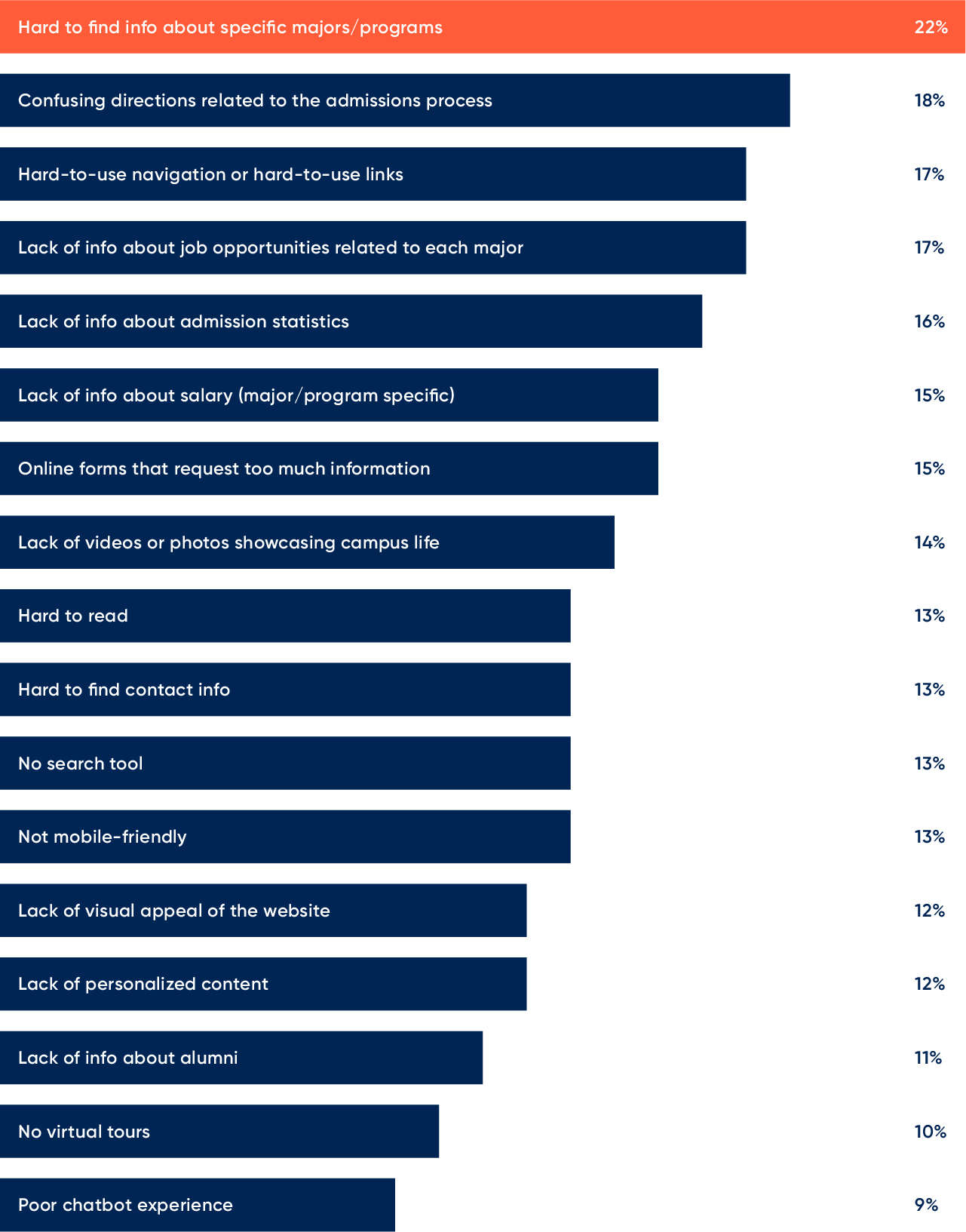
Key Takeaways
Understanding what students expect and why will help colleges and universities to figure out how they can deliver it to meet their prospective students’ expectations. In the above chart, each thing students say frustrates them is an opportunity for colleges and universities to improve their website.
Make Your Website Easy to Navigate
The respondents to the survey named ‘hard to find information about specific programs’, ‘confusing directions related to the admission process’ and ‘hard-to-use navigation’ as their top three frustrations with higher ed websites. This confirms that students really struggle to navigate higher ed websites and find relevant information.
Managing higher education websites is challenging. Colleges and universities have massive websites of thousands of webpages. Higher ed has unique requirements, which generic Content Management Systems (CMS) cannot handle. Colleges and universities that choose one-size-fits-all CMSs have to work within the generic CMSs’ limitations.
CMS that is purpose-built for higher education addresses these requirements and makes it easy for the staff to build and manage higher ed websites. It enables the institution to easily deliver the experience students expect.
Show the Value of Higher Education on Your Website
For 17% and 15% of the students the ‘lack of information about job opportunities related to each major’ and ‘lack of information about salary (major/program specific)’ respectively are frustrating. Clearly, students want to know the return on their higher education investment. Not having access to that information frustrates them.
Career Pathways is a solution that enables you to show accurate and current career data right on your program pages. Integrating career pathways helps your prospective students immediately calculate the return on their education investment
Central Oregon Community College leveraged the Modern Campus Career Pathways to display accurate career data and tripled student engagement with the website. Read their success story here.
Make Your Website Accessible to All
13% of respondents selected hard-to-read websites as a cause of their frustration. This indicates that these students find content on these websites inaccessible.
11% of university and college students have a disability—that’s 11% of your site’s total potential traffic. To have content that is inaccessible means that your message is omitting a sizable group from your target audience.
Accessibility barriers like inadequate color contrast, images and videos without captions of transcripts, dense blocks of text and tiny clickable areas make it hard for students with disabilities to access and navigate your website, leading to a bad user experience.
The objective of digital accessibility in higher education is not just to steer clear of legal action—though that is one of the benefits of an accessible approach—but it should not be the main factor. An accessible website has the potential to draw in more skilled students and aid them in their learning process more efficiently.
Learn how you can improve the accessibility of your institution’s website.
Optimize Your Website for Mobile Devices
12% of students find it frustrating that the higher ed websites are not mobile friendly. The same number of respondents find the lack of personalized content frustrating.
Students start planning for college as early as 9th grade. More than 60% of them have started their college planning by the time they start 10th grade.
On average, Gen Z starts using a smartphone—their primary digital device—when they’re in7th grade. To attract and engage this generation, colleges and universities need to have their websites optimized for mobile devices.
Industry leading CMS that are purpose-built for higher education enable you to effortlessly optimize your website for mobile devices.
Deliver Personalized Digital Experiences
12% of students reported that lack of personalized content frustrates them.
56% of respondents said they expect and prefer to use websites that deliver personalized content. This is no surprise because Generation Z is so used to personalized digital experiences, they expect nothing less from higher education institutions.
Despite understanding their students’ expectations, many institutions are still following a traditional approach to the higher education experience. They’ve been slow to adapt, partly because of several misconceptions around personalization.
Personalization works, and higher ed institutions that implemented it saw stellar results. Ferris State University increased website clickthrough by 2800% using personalization.
You can start with personalizing your higher education website in three simple steps. To learn how to strategize, execute and scale personalization, read Web Personalization for Higher Ed: From Strategy to Execution.
Provide Engaging Virtual Capus Tours
Modern learners expect to experience virtual campus tours before enrolling. 10% of students reported that not seeing virtual tours on a college or university’s website frustrates them.
The same study shows that almost half of the students confirmed that they have completed a virtual tour on a college website that offers interactive maps and/or videos.
73% say they feel likely to enroll after completing a virtual tour of a college. And this number has only been increasing each year.
If you’re not providing high-quality, engaging virtual campus tours on your website, learn from institutions that are doing so. Ohio Wesleyan University more than doubles prospect engagement with campus maps & virtual tours. Read their success story here.
Learn How to Build a Higher Education Website That Meets Students' Expectations
Building a higher education website that meets your students’ expectations is not as daunting a task as it seems. Download our quick guide Anatomy of a Purpose-Built College Website to get started.
Download the complete report for more insights into your prospective students’ expectations and behavior.
Web Design Website Personalization Student Experience Website Content Management
Last updated: July 28, 2023
